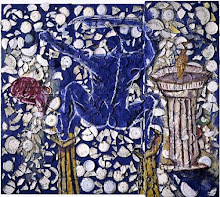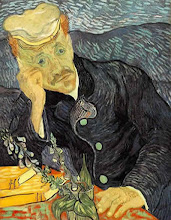“Whatever happened to Wallis and Edward,” my son asked, “I mean after he had abdicated?” We had just celebrated our son’s seventeenth birthday by taking him to see the “The King’s Speech,” which is about the constitutional crisis in Great Britain attendant upon Edward VIII’s abdication and the accession of his younger brother, Bertie, who overcame a speech impediment to become George VI.
“Were they happy together? He gave up everything for her. Did he have regrets?”
I confessed that I was no Duke and Duchess of Windsor maven. I knew some gossipy details, most of which I’d gotten second-hand from my mother, who was a girl of eleven in 1936 and would have been much affected by what H.L. Mencken called “the biggest news story since the Resurrection.”
My mother never referred to Mrs. Simpson as the Duchess of Windsor but always by the heavy-baggage, tri-partite Wallis Warfield Simpson, her voice erupting in a spitting, dyspeptic rage, which somehow made me think of Adolph Hitler ranting about the Jews.
Wallis had many failings, according to my mother, the first of which was that she was not pretty. Why this could be construed as a fault, I never quite figured out. Given that my mother was pretty herself—she had been a model in New York before her marriage--you would think she would have had more compassion for those less blessed in the looks department. But in the shopworn Keatsian manner, my mother equated truth and beauty: Wallis Warfield Simpson’s mannish looks served as an embodiment of her inner ugliness and duplicity.
“She had the morals of an alley cat,” my mother said, explaining that Wallis was divorced not once, but TWICE. Long before Wallis had started carrying on an adulterous affair with the Prince of Wales, she had “stolen” second husband Ernest Simpson away from his first wife, not long after Wallis had divorced HER first husband.
“She was a gold digger,” my mother continued, explaining that Wallis was descended from an old Southern family that had fallen on hard times after the Civil War, and that she thought nothing of manipulating men to get what she wanted. But if she was so plain, what was her power? How did she get the most powerful man in the western world to fall in love with her?
There was no ready answer to this question, but it came up often at our dinner table when I was a child, with my father never failing to point out that Wallis must have been “some piece of work” in the bedroom, that she had supposedly picked up certain “techniques” in China in the 1920s, and that once she tried these tricks on poor Edward, he was a goner.
“Honestly, what drivel you talk!” my mother said, kicking him under the table and shooting him a look that could have boiled an egg.
My parents’ differing opinions about the Windsors spoke volumes about their own irreconcilable differences, which would lead, some years later, to their divorce. To my father, Edward’s giving up the throne “for the woman I love,” as Edward put it in the famous radio speech delivered on December 11, 1936 showed existential courage, proving that the heart abides by its own laws, and that these supercede duty to country and family.
Divorced once before he met my mother, my father didn’t see a problem with Mrs. Simpson's divorces; it simply meant that she had been “around the block,” that she wasn’t a virgin ("and no one," he said, "could lock her up for that"). Mrs. Simpson embodied the tough-minded heroine who gave convention the middle finger, who followed her heart.
Who were Wallis and Edward, or W.E., as they referred to themselves in their pre-abdication correspondence? Why did they evoke such passion from people who had never met them? Wallis was so famous that “Time” Magazine named her woman of the year for 1936, the first time the publication had ever given that honor to a woman. The Duchess of Windsor also had a color named after her, “Wallis Blue,” a pale tourmaline shade that matched her eyes and was coined by the Parisian couturier, Mainbocher, who designed her wedding dress.
Obsession with the Windsors continues, decades after they have been laid to rest side-by-side in Frogmore cemetery at Windsor Castle, Wallis’ stone still missing the HRH title that her royal in-laws stripped her of in 1937 (changing the English constitution to do so). Madonna is rumored to be making a movie about the lovers, claiming that both have been pilloried by history. English Heritage recently considered installing a blue plaque on the apartment building in the West End of London where Mrs. Simpson lived in the 1930s. The government-sponsored agency finally vetoed the plaque for Bryanston Court because of Mrs. Simpson’s alleged Nazi past.
Was the Duchess of Windsor really a Nazi? I don’t remember her politics coming up at our family dinners, but any Nazi association would certainly account for my mother’s antipathy to Mrs. Simpson. My mother had lost her first love, Harold, a Norwegian flyer, who was stationed in England during the war and who perished somewhere over the English Channel; she never shared any of the details with me, only that it happened during the summer of 1943, that she had been a girl of 18, that one day the tissue-thin blue airmail letters he had written to her stopped coming, that she had been so distraught she hadn’t been able to go east to college, and that she’d taken to her bed for months.
Perhaps, in some inexplicably convoluted manner, my mother attributed the senseless death of her beloved Harold to the shallowness and self-centeredness of people like the Duke and Duchess of Windsor. (In 1937, Wallis and Edward made a much-photographed trip to visit Hitler at Berchtesgaden. Wallis was also rumored to be the mistress of Joachim von Ribbentrop, the Nazi Foreign Minister to London, at the same time as she was seeing the King. Von Ribbentrop, who was later hanged at Nuremberg in 1946, supposedly sent Mrs. Simpson 17 carnations every day to express his gratitude for the seventeen times she had slept with him.)
“Answered prayers cause more tears than those than remain unanswered,” wrote St. Theresa of Avila, whom Truman Capote quoted in his last, unpublished novel. (Capote often partied with the Windsors when they came to New York in the nineteen sixties.) According to two biographies of Mrs. Simpson, Wallis did not want Edward to abdicate, and hoped to remain the King’s mistress while staying put in her marriage. “I intend,” she wrote to her aunt, “to keep them both.”
But the King’s slavish devotion to her (she called him “the Little Man” but his passion was hardly diminutive) proved as unstoppable as Hitler’s desire to annex all of Europe. “How can a woman be a whole empire to man?” she confided in bewilderment to her uncle. Years later, she said that it was not possible to “abdicate and eat it,” and that she would rather be “the mistress of a king, than the wife of the Governor-General of The Bahamas.” (Churchill had posted the Windsors to the Bahamas in hopes that they would not interfere with the war effort.)
“You can never be too rich or too thin,” the Duchess of Windsor is meant to have said, a maxim that she had stitched onto throw pillows in the living rooms of her homes in France and New York. Thanks to the largesse of Great Britain as well as the French government (the Windsors leased their Paris home in the Bois de Boulogne for decades for only a nominal fee), the Duke and Duchess were very rich. They spent their days shopping for the 100-plus dresses the Duchess purchased each year (when asked in an interview how he passed the time, the Duke confided that he had spent his morning helping the Duchess pick out a hat), with time out for the Duchess to have the tiny layer of fat on her tummy massaged, and the Duke to putter in his gardens.
There was a song that my father used to play on the phonograph in his study in the declining years of his marriage to my mother. The song was by Peggy Lee and it was a moody mix of melancholy and gaiety: “Is that all there is? Then let’s keep dancing…”
When I think of the Duke and Duchess of Windsor, together and together and together in their rooms of Wallis blue, I think of that song.
Introducing Frida von Zweig
3 years ago








